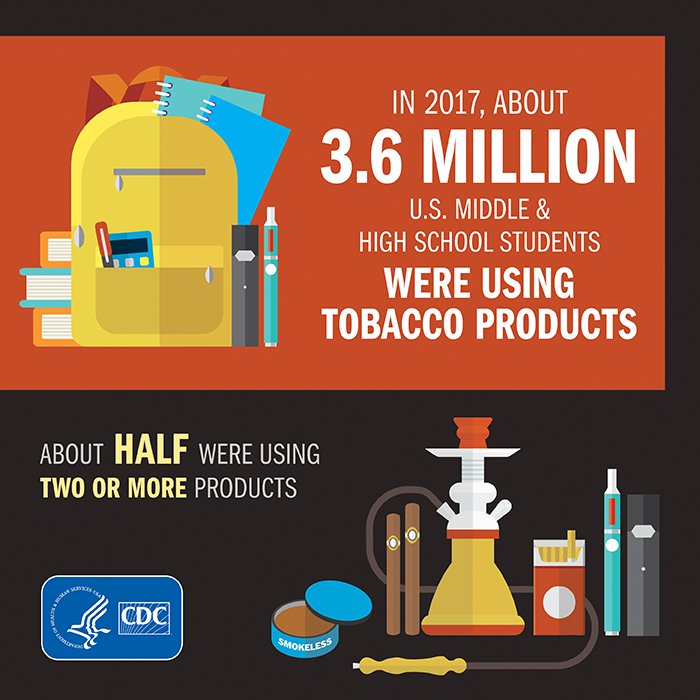Tobacco use falls among US middle, high school students
Click Here to Manage Email Alerts

The number of United States middle school and high school students who reported using tobacco products decreased from 2011 to 2017, according to survey results released today by the FDA and the CDC.
High school students reported a drop in use from 24.2% to 19.6%, whereas middle school students reported a decrease from 7.5% to 5.6% during that time period.
Approximately one in five high school students (2.95 million) reported tobacco use in 2017, compared with 3.69 million users in 2011. In middle school, 0.67 million students reported tobacco use, compared with 0.87 million in 2011.
“Despite promising declines in tobacco use, far too many young people continue to use tobacco products, including e-cigarettes,” CDC Director Robert R. Redfield, MD, said in a press release. “Comprehensive, sustained strategies can help prevent and reduce tobacco use and protect our natation’s youth from this preventable health risk.
The 2011-2017 National Youth Tobacco Surveys were used to compare the data, with sample sizes and response rates ranging from 17,711 and 63.4% in 2015 to 24,658 and 73.6% in 2012.
In the survey, students were asked about current use, defined as the past 30 days, of cigarettes, cigars, smokeless tobacco, e-cigarettes, hookah, pipe tobacco and bidis, which are small imported cigarettes wrapped in a leaf.
In the 2017 survey, 9.2% of high school students reported using at least two tobacco products and 12.9% reported using combustible products. The most commonly used tobacco product was e-cigarettes (11.7%). Other products used were cigars (7.7%), cigarettes (7.6%), smokeless tobacco (5.5%), hookah (3.3%), pipe tobacco (0.8%) and bidis (0.7%).

Males were more likely to use smokeless tobacco. White and Hispanic students were most likely to use e-cigarettes, whereas black students reported cigars as the most commonly used product.
Among middle school students, 2.4% reported using two or more tobacco products and 3.4% reported current use of combustible tobacco products.
E-cigarettes also were the most commonly used product in this cohort (3.3%). Other products used were cigarettes (2.1%), smokeless tobacco (1.9%), cigars (1.5), hookah (1.4%), pipe tobacco (0.4%) and bidis (0.3%). Boys reported a higher percentage of any tobacco product use compared with girls (6.4% vs. 4.8%). Hispanic, black and white middle school students reported e-cigarettes as the most commonly used product.
There were nonlinear decreases in current use of at least two tobacco products (12% to 9.2%) and any combustible tobacco product (21.8% to 12.9%) for high school students during the time period. However, e-cigarette use increased from 1.5% to 11.7% from 2011 to 2017.
Use of two or more tobacco products (3.8% to 2.4%) and any combustible tobacco product (6.4% to 3.4%) saw linear decreases in the middle school population. However, there were nonlinear increases in e-cigarettes (0.6% to 3.3%) and hookah use (1% to 1.4%) among the cohort from 2011 to 2017.
Among high school students who used a tobacco product, approximately one in two reported using two or more products, whereas two in five middle school students who used a tobacco product reported using two or more products.
”We are encouraged by the recent declines in overall youth tobacco use; however, we must do more to address the disturbingly high number of youth who are using e-cigarettes,” FDA Commissioner Scott Gottlieb, MD, said in the release. “The FDA is taking new enforcement steps to make sure all tobacco products – particularly e-cigarettes – are not being marketed to, sold to, or used by kids. We are also advancing our framework for the regulation of these products through our review process to address youth initiation, and we are investing in compelling, science-based campaigns to educate youth about the dangers of e-cigarettes.” – by Bruce Thiel
Disclosures: Redfield and Gottlieb work for the CDC.